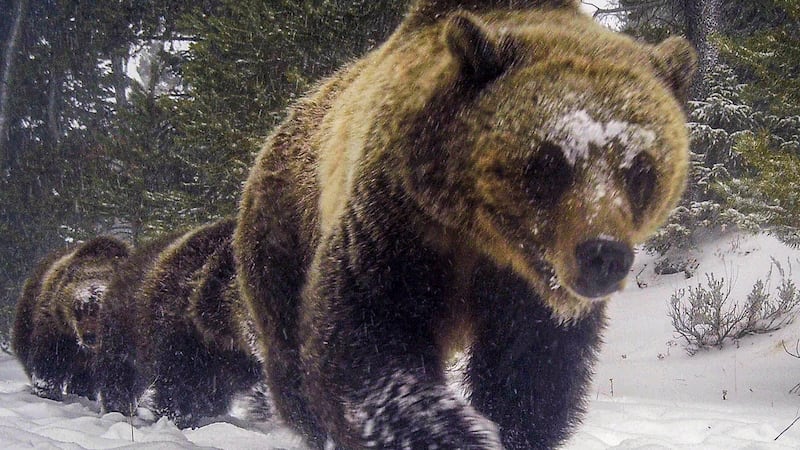Canadian Prime Minister Justin Trudeau invoked sweeping emergency police powers on Monday to quell protests against vaccine mandates and other Covid-19 restrictions in the capital and at border crossings.
“This is not a peaceful protest,” the Canadian leader told reporters in Ottawa alongside top cabinet officials.
The federal government is stepping in because local police authorities have had difficulty enforcing the law, he said.
“This is about keeping Canadians safe, protecting people’s jobs and restoring confidence in our institutions,” Trudeau said. Protests that began with a trucker convoy to Ottawa more than two weeks ago have gridlocked
Canada’s capital city and expanded to border crossings, including the bridge that carries a quarter of
Canada's commerce with the US, its largest trading partner. That span -- between Windsor, Ontario and Detroit -- was reopened to traffic late Sunday night. The Royal Canadian Mounted Police also announced arrests Monday at an offshoot demonstration in western
Canada, seizing a cache of weapons at a border blockade in southern Alberta. Trudeau's use of the federal Emergencies Act echoes the famous move by his father, Pierre Trudeau, in 1970 to effectively declare martial law in response to kidnappings by Quebec separatists. But the legislation being used now isn't as aggressive in scope, and Trudeau said there are no plans to call in the military.
Wreak havoc
The determination with which protesters have chosen to wreak havoc -- albeit so far in mainly non-violent ways -- has rattled a nation unaccustomed to public rancor. Many Canadians are still trying to come to grips with it all. Some are blaming Trudeau for using vaccines as a wedge issue, and galvanizing the demonstrators by calling them “a small fringe minority.”
Also on Monday, Ontario announced it would accelerate dropping its coronavirus restrictions, becoming the latest province to dramatically scale back public health measures meant to blunt the Omicron wave.
Protests over those public health restrictions have for weeks paralysed the nation’s capital, halted trade and raised broader questions over the ability of police to enforce existing laws.
In an indication of the deteriorating situation, Mr Trudeau met with both his cabinet and provincial premiers on Monday morning, where he reportedly told them he would use the emergencies Act. The law gives the government broad powers for 30 days, but Mr Trudeau is not expected to call in the military.
The law defines an emergency as a situation that “seriously endangers the lives, health or safety of Canadians and is of such proportions or nature as to exceed the capacity or authority of a province to deal with it”. In order for the law to be used, the federal government must consult with both the provinces and cabinet. There must be a belief the protesters constitute a national emergency and cannot be dealt with under existing laws.
The current law replaced the War Measures Act which was used by Mr Trudeau’s father Pierre Elliott Trudeau, who was prime minister during the “October crisis” – a period of separatist violence in Quebec, in 1970.
Counter-protests
Protesters in Ottawa have refused leave the nation’s capital, despite pleas from local, provincial and federal leaders. As they have shown an increasing brazenness in flouting the city’s laws, including setting up a hot tub near parliament, residents have taken to the streets in anger. Over the weekend, counter-protesters stopped more trucks from entering the downtown core.
On Sunday, the Ottawa Citizen reported two members of Joint Task Force 2, the military’s elite special forces unit, were under investigation for their alleged involvement in the convoy protest.
The city’s mayor, Jim Watson, has offered to negotiate with the leaders of the protests to remove them from residential neighbourhoods, but a deal between the city and protesters was marred by confusion after Tamara Lich, one of the protest leaders, said there was no deal, before then suggesting it was real.
On Monday, a poll from the Angus Reid Institute found that nearly three-quarters of Canadians wanted the protesters to return home, suggesting waning support for the blockade that has reached an unprecedented level in Ottawa.
Windsor breakthrough
The police's inability to remove protesters comes in stark contrast to events in the city of Windsor over the weekend, where officers were able to clear protesters from the Ambassador Bridge. The police action ended the blockade that lasted nearly a week and halted hundreds of millions in trade between Canada and the United States. Police arrested nearly 30 people and seized 12 vehicles.
With the bridge now open, pressure is mounting on federal, provincial and municipal leadership to solve the protests in Ottawa, which have entered their third week, as well as blockades at the American border in Alberta and Manitoba. Both provinces have recently scaled back their coronavirus restrictions.
Ontario became the latest province to speed up its reopening after premier Doug Ford said on Monday that the Omicron wave in the province was fading. “This is great news and a sign of just how far we’ve come together in our fight against the virus. While we aren’t out of the woods just yet, we are moving in the right direction,” he said at a press conference.
Ontario will lift capacity limits on restaurants and businesses on Thursday and if the current trajectory of infections continues, will drop its vaccine passport system on March 1st. Mr Ford said the province will keep masking rules in place for the near future. – Guardian











